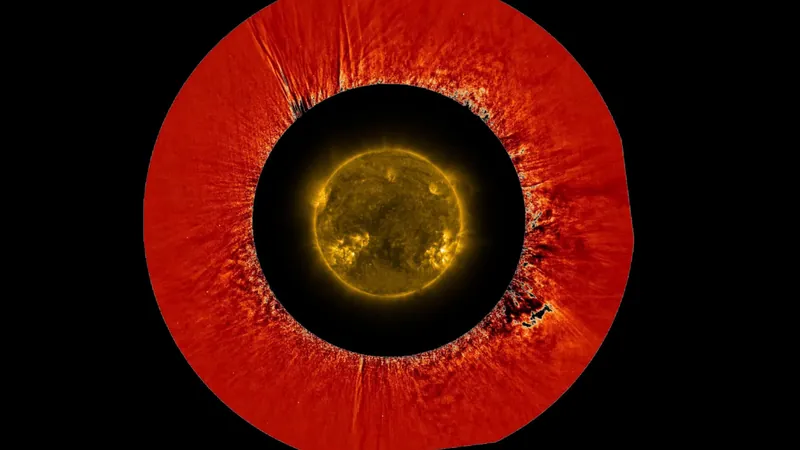
Unveiling the Solar Wind: Turbulence in the Sun's Corona
2024-09-26
Introduction
The infamous solar wind, a relentless stream of charged particles propelling from our Sun, is far from a gentle breeze. Instead, it embodies a tempestuous force, constantly shifting and swirling as it travels through the vastness of space. Recent studies reveal that this turbulence begins not far from the Sun's surface but rather in its very atmosphere, known as the corona.
Breakthrough Findings
A groundbreaking video has provided clear evidence supporting long-held suspicions that solar wind turbulence originates close to the Sun. Disturbances in the solar corona propagate outward, escalating into chaotic flows that can dramatically impact the behavior of solar wind as it traverses the solar system.
The Role of the Metis Instrument
Utilizing the advanced Metis coronagraph instrument aboard the Solar Orbiter, scientists can obstruct direct sunlight and capture the fainter, yet critical, ultraviolet and visible light emitted from the corona. The detailed imagery produced by this instrument reveals intricate structures and movements, shedding light on how turbulence develops at the source of solar wind.
Remarkable Observations
On October 12, 2022, a remarkable observation was made when the Solar Orbiter was positioned a mere 43.4 million kilometers from the Sun, which is less than one-third of the Earth-Sun distance. The striking red-tinted ring displayed in the accompanying video represents the data collected by Metis on that day, while the central view of the Sun was captured by the Solar Orbiter’s Extreme Ultraviolet Imager.
Significance of the Research
“This new analysis provides the first-ever evidence for the onset of fully developed turbulence in the Sun’s corona,” explained Daniel Müller, ESA's Solar Orbiter Project Scientist. “Solar Orbiter’s Metis coronagraph was able to detect this turbulence closer to the Sun than any previous missions, enabling local measurements previously thought impossible.”
Impact on Space Weather
Understanding this turbulence is vital not only for comprehending the heating mechanism of solar wind but also for predicting its effects on space weather—a critical aspect that can influence satellite operations, astronaut safety, and technology back on Earth.
Publication and Future Implications
The findings of this study, titled “Metis observation of the onset of fully developed turbulence in the solar corona” by Daniele Telloni et al., were recently published in the esteemed Astrophysical Journal Letters. The implications of this research echo much further than just our immediate cosmic neighborhood; they could reshape our understanding of solar physics and the myriad interactions between solar wind and planetary magnetic fields.
Call to Action
Don’t Miss Out! Explore How Space Weather Can Disrupt Our Lives and What This Means for the Future of Space Exploration!


 Brasil (PT)
Brasil (PT)
 Canada (EN)
Canada (EN)
 Chile (ES)
Chile (ES)
 España (ES)
España (ES)
 France (FR)
France (FR)
 Hong Kong (EN)
Hong Kong (EN)
 Italia (IT)
Italia (IT)
 日本 (JA)
日本 (JA)
 Magyarország (HU)
Magyarország (HU)
 Norge (NO)
Norge (NO)
 Polska (PL)
Polska (PL)
 Schweiz (DE)
Schweiz (DE)
 Singapore (EN)
Singapore (EN)
 Sverige (SV)
Sverige (SV)
 Suomi (FI)
Suomi (FI)
 Türkiye (TR)
Türkiye (TR)